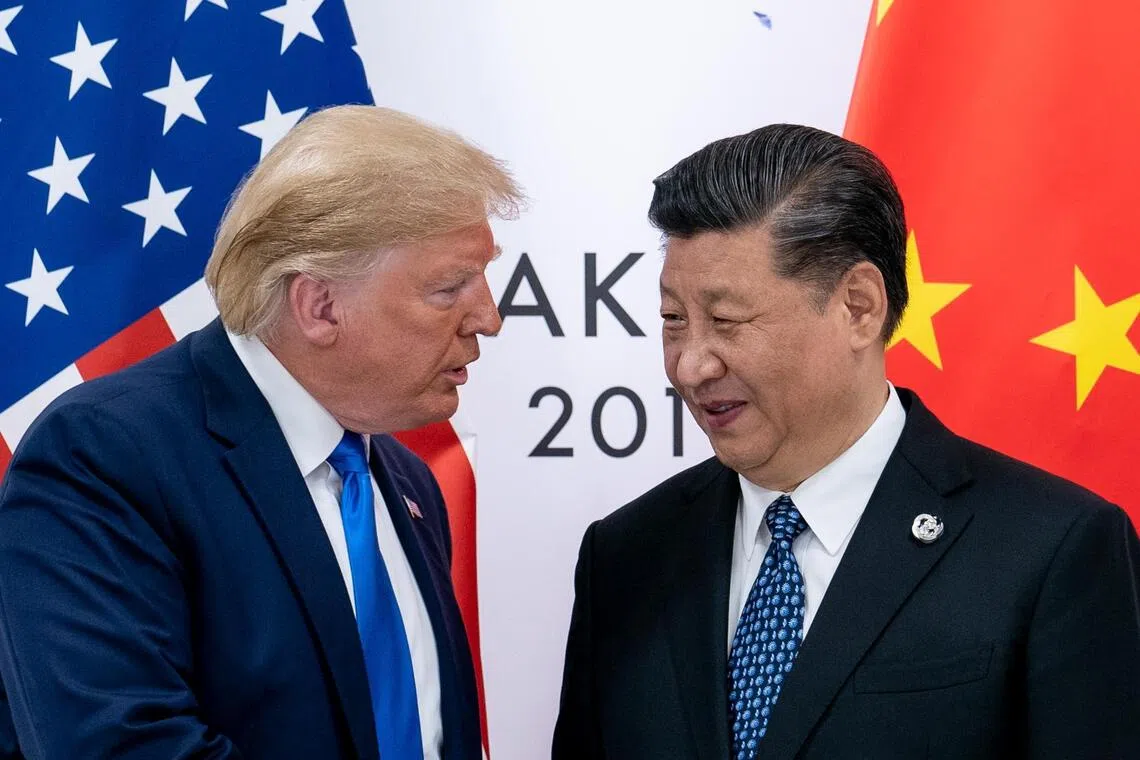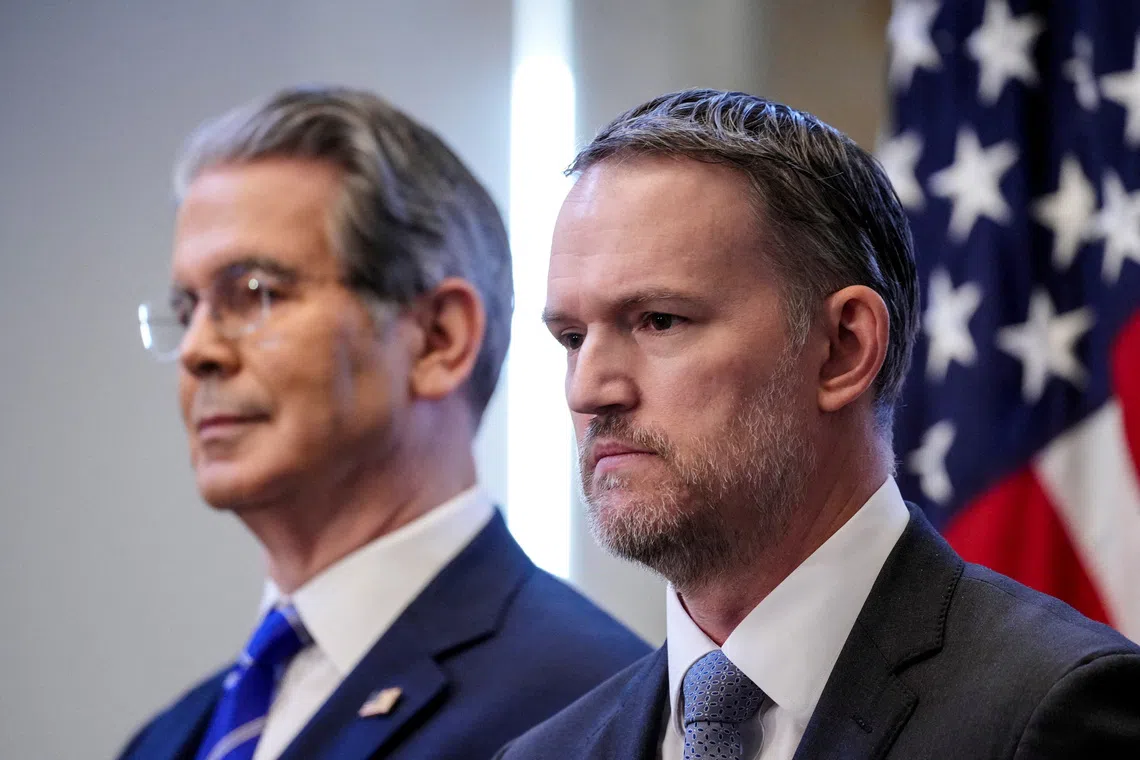Chinese and US officials reach framework of trade deal
Sign up now: Get ST's newsletters delivered to your inbox

US President Donald Trump and his Chinese counterpart Xi Jinping are expected to meet on Oct 30 in South Korea.
PHOTO: ERIN SCHAFF/NYTIMES
Keith Bradsher and Zunaira Saieed
Follow topic:
BEIJING – Chinese and American trade negotiators said on Oct 26 that they had agreed to a framework of a deal on tariffs and other issues before an expected meeting of the countries’ top leaders this week.
“We are moving forward to the final details of the type of agreement that the leaders can review and decide if they want to conclude together,” US Trade Representative Jamieson Greer said to reporters in Kuala Lumpur.
He also said the two sides had also discussed another extension in a series of truces on tariffs they have engaged in in 2025.
China’s top trade negotiator, Mr Li Chenggang, described the talks between the US and China as “candid and in-depth discussions” on the trade deal, adding that the two sides had reached a “preliminary consensus”.
The negotiators were in Kuala Lumpur for an Asean meeting, where US President Donald Trump began a nearly week-long trip to Asia. He is expected to meet his Chinese counterpart Xi Jinping on Oct 30 at a separate economic meeting in South Korea. The variety of issues discussed in Kuala Lumpur included bilateral trade, export controls, reciprocal tariff extensions, fentanyl-related tariffs and cooperation on combating fentanyl trafficking, according to the Chinese side.
Mr Greer said the negotiations had included rare earth metals
“We talked about extending the truce. We talked about rare earths, of course. We talked about all kinds of topics,” he said.
Treasury Secretary Scott Bessent told ABC that he anticipated a “fantastic meeting” between Mr Trump and Mr Xi in South Korea this week. The framework agreed to by US and Chinese officials, which includes agricultural purchases and fentanyl-related tariffs, will act as something of a “pre-game” for the meeting, he said.
“The President had given me maximum leverage when he threatened 100 per cent tariffs if the Chinese imposed their rare earth global export controls,” Mr Bessent said. “I think we have averted that, so the tariffs will be averted.”

Chinese Vice Premier He Lifeng (left) with China's top trade negotiator Li Chenggang in Kuala Lumpur, on Oct 25.
PHOTO: REUTERS
Asked what concessions China was willing to make on rare earth minerals, Mr Bessent said he expected China would “delay that for a year while they re-examine it”.
The discussions also included steep port fees that the US recently imposed on ships that were built in China or are owned by Chinese companies. China has retaliated by putting tariffs on American-built ships – few are left on international routes – and on ships partly or entirely owned by American companies or investors.
Both sides were careful to suggest that they did not have a final deal. “China and the United States constructively explored a plan for appropriately dealing with some of the concerns of both sides,” Mr Li said, adding that the next step is for each side “to fulfil its respective domestic approval procedures”.
Mr Li’s reference to internal approval procedures used a Chinese term that could be construed as signalling that administrative steps may be planned. China’s Ministry of Commerce issued extensive export regulations on Oct 9 that immediately halted any further transfer out of China of the technology needed to process rare earth metals.
Rare earth metals are essential to a wide range of advanced manufacturing, including the production of cars, semiconductors, drones, factory robots and offshore wind turbines, as well as missiles, fighter jets, tanks and other military equipment.
China produces 90 per cent of the world’s refined rare earths and rare earth magnets, and up to 100 per cent of some kinds of rare earths that are particularly needed for the most cutting-edge technologies and military applications.
The Ministry of Commerce has severely restricted exports of rare earths and rare earth magnets to countries all over the world since April 4. It ordered further export controls on Oct 9 that are scheduled to take effect on Nov 8 and Dec 1.
Those rules would limit any shipments across any country’s borders of products containing Chinese rare earth magnets. The rules would also limit exports of equipment to make electric car batteries, another sector in which China is trying to preserve its global technological leadership.
The new regulations would limit exports of considerable equipment, like diamond saws, that are needed in the manufacturing of semiconductors and solar panels. Mr Trump has threatened to impose 100 per cent tariffs on goods from China if Beijing goes ahead with the export controls.

US Treasury Secretary Scott Bessent (left) and US Trade Representative Jamieson Greer in Washington, on Oct 15.
PHOTO: REUTERS
Mr Bessent echoed Mr Greer and Mr Li in cautiously portraying progress achieved in the Kuala Lumpur talks.
“We have a very successful framework for the leaders to discuss,” he told reporters after the negotiations on Oct 26. NYTIMES

